
|
Tin Học >> Hệ Thống - Mạng >> Quản Lý và Bảo Trì Windows Sever
||
 Phân Tích Thiết Kế Hệ Thống Phân Tích Thiết Kế Hệ Thống
 Bảo Trì Hệ Thống Bảo Trì Hệ Thống
 Thông Tin Di Động Thông Tin Di Động
 Quản Lý và Bảo Trì Windows Sever Quản Lý và Bảo Trì Windows Sever
 An Toàn Bảo Mật Thông Tin An Toàn Bảo Mật Thông Tin
 CCNA CCNA
 Microsoft Exchange Server Microsoft Exchange Server
 Cơ Sở Điều Khiển Tự Động Cơ Sở Điều Khiển Tự Động
 Windows Server Windows Server
Có 17 bài trong 2 trang (10 bài/trang) và bạn đang ở trang 2.
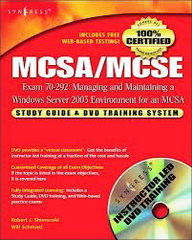
Your network consists of a single Active Directory domain named contoso.com. The functional level of the domain is Windows Server 2003. You need to schedule a task to find all user accounts whose passwords have remained unchanged during the past 60 days. Which tool should the scheduled task run? A. Dsget.exe B. Dsquery.exe C. Active Directory Users and Computers D. Find.exe Your network consists of a single Active Directory domain. All servers run Windows Server 2003 Service Pack 2 (SP2). You restore the system state on a member server. You attempt to log on to the server and receive the following error message: "The system cannot log you on to this domain because the system's computer account in its primary domain is missing or the password on that account is incorrect." You need to ensure that you can successfully log on to the domain from the server. What should you do on the server? A. Modify the password policy. B. Run the Dsrm.exe command. 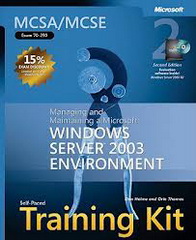
Your network consists of a single Active Directory domain. All domain controllers run Windows Server 2003 Service Pack 2 (SP2). You have an organizational unit (OU) that contains 1,000 computer accounts. You need to move the computer accounts to a new OU. Which tool should you use? A. Active Directory Domains and Trusts B. Active Directory Users and Computers C. Csvde.exe D. Dsmod.exe Your network consists of a single Active Directory domain. All servers run Windows Server 2003 Service Pack 2 (SP2). You have a server named Server1. You try to log on to Server1 and receive the following error message: "Windows cannot connect to the domain, either because the domain controller is down or otherwise unavailable, or because your computer account was not found. Please try again later. If this message continues to appear, contact your system administrator for assistance." You verify that you can contact a domain controller from Server1. You need to ensure t 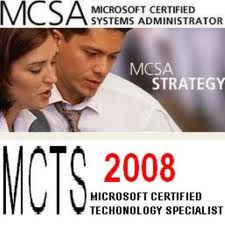
You have a server that runs Windows Server 2003 Service Pack 2 (SP2). You need to identify all the unsigned drivers that are installed on the server. What should you do? A. Run Chkdsk.exe. B. Run Sigverif.exe. C. Review %systemroot%\repair\setup.log. D. Open Device Manager and review all the devices that contain a warning. You have a server named Server1 that runs Windows Server 2003 Service Pack 2 (SP2). Server1 is used for testing. You need to ensure that Server1 administrators can install any driver on Server1 without receiving a warning message. What should you do? A. Run Driverquery.exe. B. Modify the Driver Signing option. C. Modify the Load and unload device drivers user right. D. Modify the permissions for the %systemroot%\system32\drivers folder. 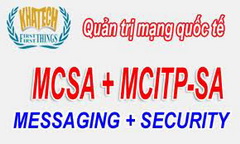
Your network contains a server named Server1 that runs Windows Server 2003 Service Pack (SP2). You install a new network adapter on Server1. You need to view the media access control (MAC) address for the new network adapter. What should you do? A. At the command prompt, run Ipconfig /all. B. At the command prompt, run Net view \\server1. C. From the Device Manager snap-in, view the properties of the network adapter. D. From the Services snap-in, view the properties on the Network Connections service. Your network contains a database server that runs Windows Server 2003 Standard Edition Service Pack 2 (SP2). The server has 1 GB of RAM and a single hard disk. Queries against the databases on the server are very slow. You discover that the hard disk on the server is very active. You are evaluating whether to add RAM to the server. You need to use System Monitor to find out whether adding RAM will decrease disk activity. Which performance counter should you m 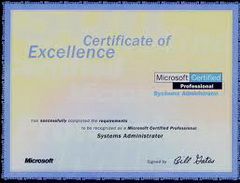
Your network contains a server named Server1 that runs Windows Server 2003 Service Pack 2 (SP2). Server1 is configured as shown in the following table. Disk1 fails. You remove Disk1 from the computer and replace it with a 250-GB basic disk named Disk2. You open the Disk Management snap-in and remove Disk1 from the mirrored volume. You are unable to add Disk2 to the mirrored volume. You need to ensure that you can add Disk2 to the mirrored volume for drive C. What should you do? A. Convert Disk2 to a dynamic disk. B. On Disk2, create a 160-GB simple volume. C. From the Action menu, select Rescan disks. D. Replace Disk2 with another disk that is the same size as Disk0. Your network contains a server named Server1 that runs Windows Server 2003 Service Pack 2 (SP2). Server1 is configured as shown in the following table. Disk1 fails. You remove Disk1 from the computer and install Disk4. You open the Disk Management snap-in and discover that the status of Disk 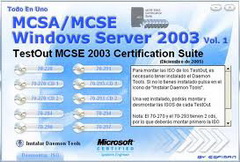
You have a server that runs Windows Server 2003 Service Pack 2 (SP2). You create two shares as shown in the following table. The NTFS permissions for the HR folder are configured as shown in the exhibit. (Click the Exhibit button.) You need to ensure that only members of the HR group can access files in the HR folder without affecting other users' access to files in the CorpData folder. What should you do? A. Modify the NTFS permissions on the HR folder to deny Read access to the Domain Users group. B. Disable NTFS permission inheritance on the HR folder and copy the inherited permissions. C. Move the HR folder to D:\. Share D:\HR as HRData and assign the HR group Allow - Change. D. Modify the share permissions for the HRData share to deny read access to the Domain Users group. You manage a software update infrastructure by using Windows Server Update Services (WSUS) 3.0. All client computers run Windows XP Professional Service Pack 3 (SP3). The client compu 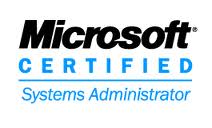
You are the network administrator for your company. The network consists of a single Active Directory domain. All domain controllers run Windows Server 2003. All client computers run Windows XP Professional with default settings. Some users have portable computers, and the rest have desktop computers. You need to ensure that all users are authenticated by a domain controller when they log on. How should you modify the local security policy? A. Require authentication by a domain controller to unlock the client computer. B. Cache zero interactive logons. C. Cache 50 interactive logons. D. Grant the Log on locally user right to the Users group. You have a server that runs Windows Server 2003 Service Pack 2 (SP2). You need to ensure that a defragmentation of the server's hard disk drive runs each night. What should you do? A. Create a scheduled task that runs Dfrg.msc. B. Create a scheduled task that runs Defrag.exe. C. From Computer Management, run Disk Mana
Đến trang:
 1 1
|